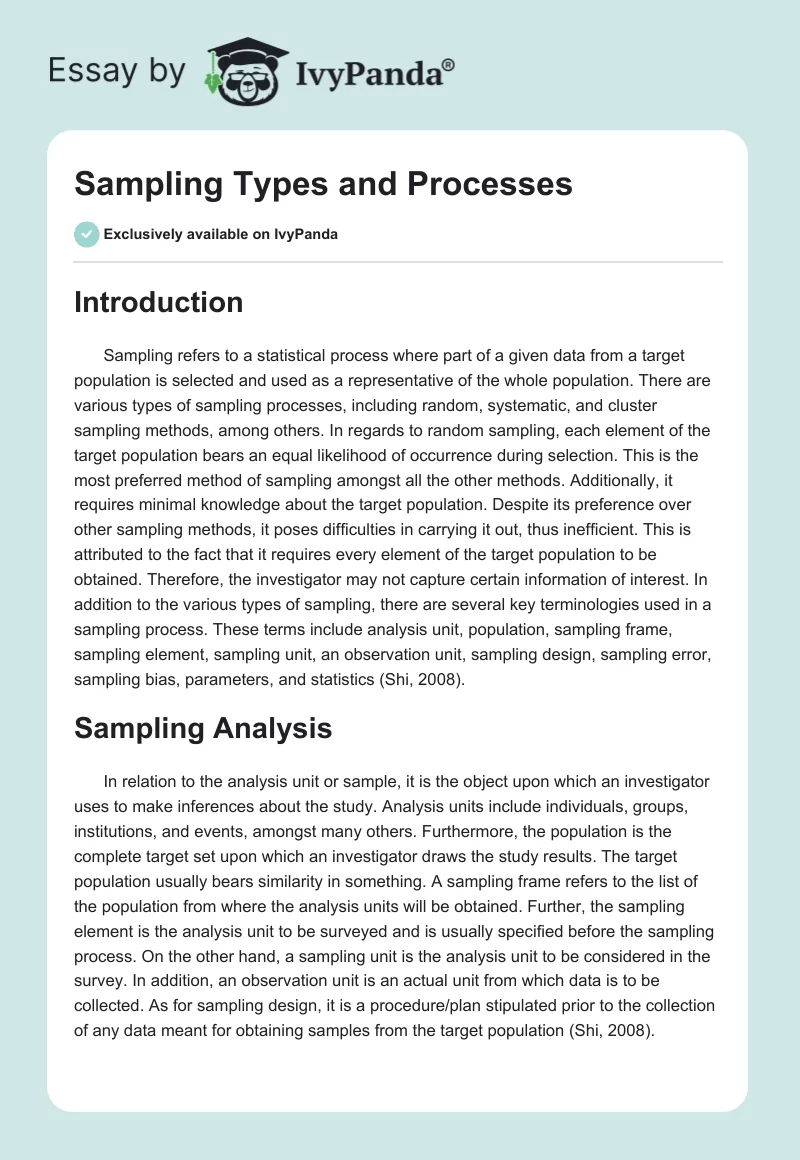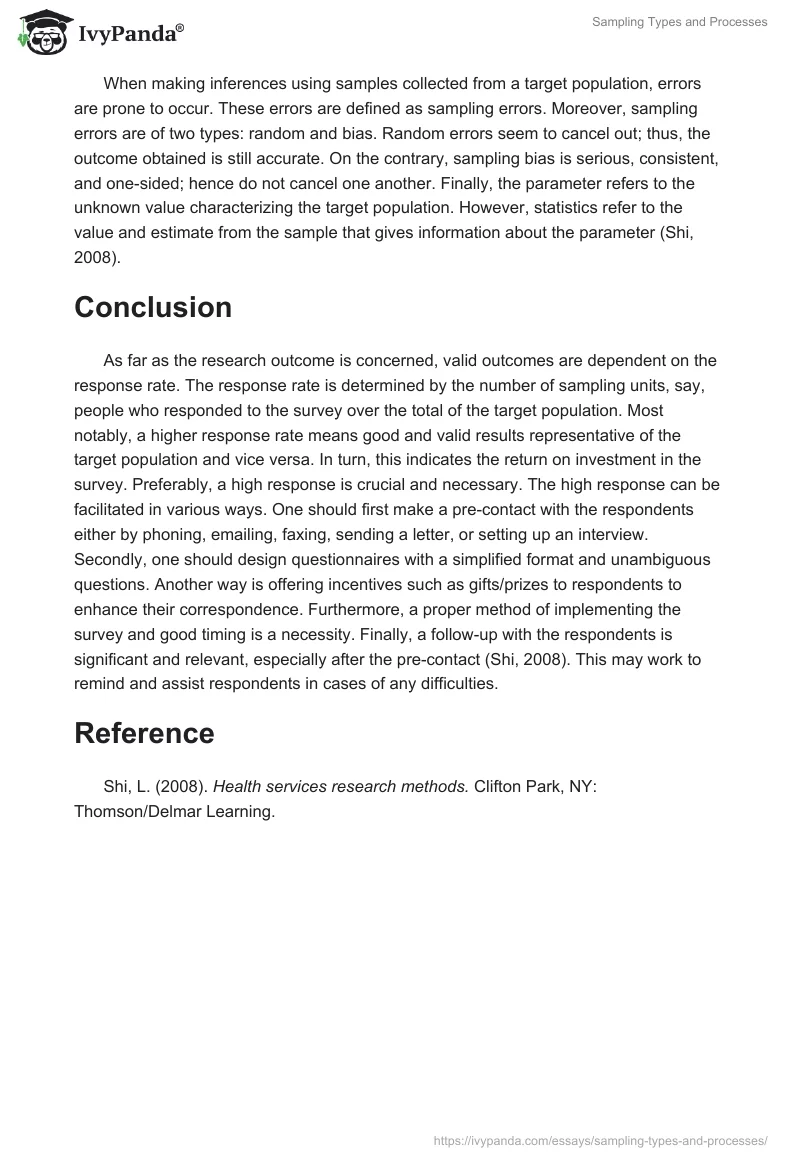Introduction
Sampling refers to a statistical process where part of a given data from a target population is selected and used as a representative of the whole population. There are various types of sampling processes, including random, systematic, and cluster sampling methods, among others. In regards to random sampling, each element of the target population bears an equal likelihood of occurrence during selection. This is the most preferred method of sampling amongst all the other methods. Additionally, it requires minimal knowledge about the target population. Despite its preference over other sampling methods, it poses difficulties in carrying it out, thus inefficient. This is attributed to the fact that it requires every element of the target population to be obtained. Therefore, the investigator may not capture certain information of interest. In addition to the various types of sampling, there are several key terminologies used in a sampling process. These terms include analysis unit, population, sampling frame, sampling element, sampling unit, an observation unit, sampling design, sampling error, sampling bias, parameters, and statistics (Shi, 2008).
Sampling Analysis
In relation to the analysis unit or sample, it is the object upon which an investigator uses to make inferences about the study. Analysis units include individuals, groups, institutions, and events, amongst many others. Furthermore, the population is the complete target set upon which an investigator draws the study results. The target population usually bears similarity in something. A sampling frame refers to the list of the population from where the analysis units will be obtained. Further, the sampling element is the analysis unit to be surveyed and is usually specified before the sampling process. On the other hand, a sampling unit is the analysis unit to be considered in the survey. In addition, an observation unit is an actual unit from which data is to be collected. As for sampling design, it is a procedure/plan stipulated prior to the collection of any data meant for obtaining samples from the target population (Shi, 2008).
When making inferences using samples collected from a target population, errors are prone to occur. These errors are defined as sampling errors. Moreover, sampling errors are of two types: random and bias. Random errors seem to cancel out; thus, the outcome obtained is still accurate. On the contrary, sampling bias is serious, consistent, and one-sided; hence do not cancel one another. Finally, the parameter refers to the unknown value characterizing the target population. However, statistics refer to the value and estimate from the sample that gives information about the parameter (Shi, 2008).
Conclusion
As far as the research outcome is concerned, valid outcomes are dependent on the response rate. The response rate is determined by the number of sampling units, say, people who responded to the survey over the total of the target population. Most notably, a higher response rate means good and valid results representative of the target population and vice versa. In turn, this indicates the return on investment in the survey. Preferably, a high response is crucial and necessary. The high response can be facilitated in various ways. One should first make a pre-contact with the respondents either by phoning, emailing, faxing, sending a letter, or setting up an interview. Secondly, one should design questionnaires with a simplified format and unambiguous questions. Another way is offering incentives such as gifts/prizes to respondents to enhance their correspondence. Furthermore, a proper method of implementing the survey and good timing is a necessity. Finally, a follow-up with the respondents is significant and relevant, especially after the pre-contact (Shi, 2008). This may work to remind and assist respondents in cases of any difficulties.
Reference
Shi, L. (2008). Health services research methods. Clifton Park, NY: Thomson/Delmar Learning.


